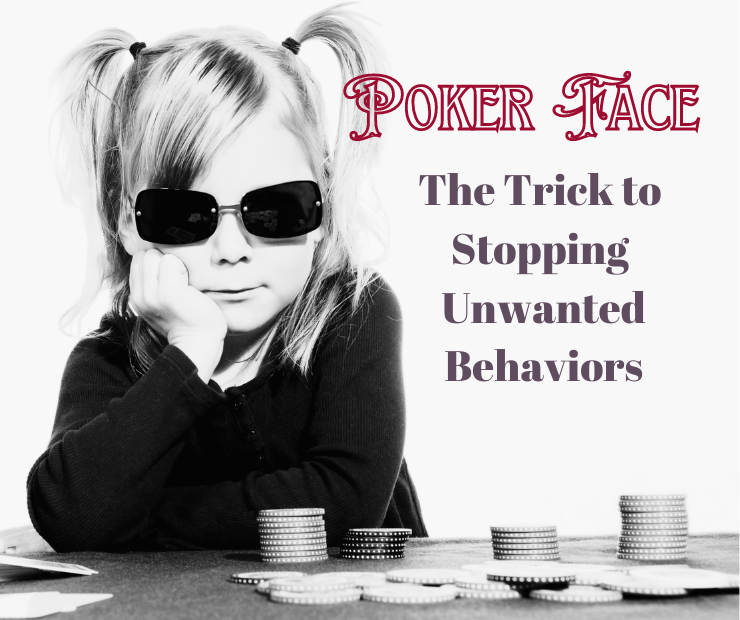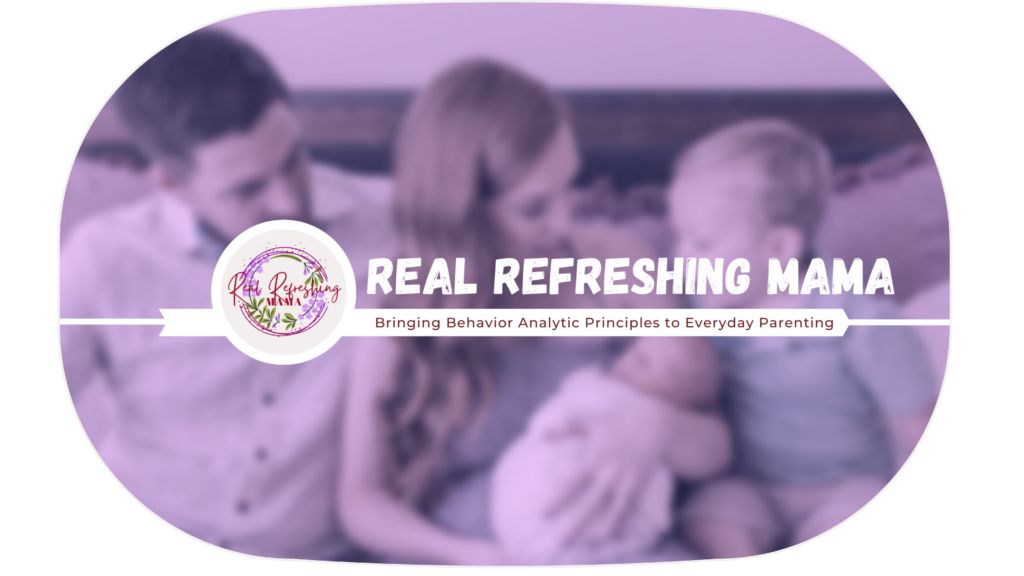Every parent has been there: your child throws a tantrum in the middle of the store, or repeatedly interrupts while you’re on the phone. It’s challenging, often embarrassing, and quite natural to react. But here’s the catch – the type of attention we offer during these instances can shape future behaviors. As a behavior analyst, I’ve witnessed firsthand the power of strategic attention in nurturing desired behaviors in children. It is one of the biggest keys to shaping your child’s behavior in a positive way.
If you can’t tell them to stop screaming, then what do you do? Here are some tips and tricks to get more of the behaviors you want and stop the ones you don’t want.
Understanding Attention as Reinforcement:
Attention, be it positive (praise) or negative (reprimands), is a potent form of reinforcement for children. When kids act out, it’s often a quest for engagement, attention, or a response from the adults around them. Even negative reactions, like scolding, can inadvertently reinforce undesired behaviors because it provides the child with the attention they sought.
The Cycle of Attention-Seeking Behavior:
- The Trigger (Antecedent): Something prompts the child’s behavior, be it boredom, a need for control, attention, or wanting a desired item.
- The Behavior: The child acts out in a specific manner, often aimed at garnering attention.
- The Response: Adults react. If the reaction is attention (of any kind), the child’s behavior is validated and more likely to be repeated.
- Reinforcement: The cycle strengthens each time the behavior gets a reaction, making it a learned pattern.
** Click here to get a better understanding of Reinforcement
Understanding the Behavior of Toddlers
Toddlers are at a stage of rapid development and learning. They’re starting to explore their independence but still lack the emotional regulation skills to manage their feelings effectively. Common triggers for unwanted behavior can include hunger, tiredness, overstimulation, or frustration from not being able to communicate their needs or desires effectively.
When a toddler displays unwanted behavior, it’s often a way of communicating these unmet needs or overwhelming emotions. Reacting negatively to this behavior – by yelling, punishing, or showing frustration – often backfires.
Impacts of Negative Reactions on Toddlers
Negative reactions can escalate the situation in the short term, leading to more intense tantrums or defiance. In the long term, they can also teach toddlers that negative behavior is a way to get attention.
Alternatives to Giving Reactions to the Unwanted Behavior
Instead of reacting negatively to unwanted behavior, consider these strategies:
See example scenario below
Selective Ignoring:
Not every behavior requires a reaction. For behaviors that are harmless and attention-seeking, consciously choose to withhold attention. Over time, without the ‘reward’ of attention, these behaviors often decrease.
Yes, I am even talking about those annoying behaviors, like throwing food on the floor, or obnoxious screaming. Even some harmful behaviors like hitting, biting or head banging. Even the slightest attention to these types of behaviors can send you down a hard road with your toddler. Of course these behaviors are not okay to just ignore, but especially the first few times you see a behavior like this, it is best to not give it any direct attention. Redirect your child to something else and work on appropriate ways to handle that situation next time.
Aggressive and destructive behaviors can intensify really quickly. One of the worst things you can do when you see your child engage in one of these behaviors (hitting, biting, head banging etc) is to have a big reaction. All that does is teach your child that they will get a reaction and attention when they engage in those behaviors.
Redirection:
If your toddler is doing something you don’t want them to do, redirect their attention to an acceptable activity. This is one of the most important skills to learn as a parent of young children. It can make or break an incoming tantrum and it can very quickly stop the unwanted behaviors.
For Example
Positive reinforcement:
Praise your toddler when they display good behavior. This can motivate them to repeat the behavior to receive more positive attention. This is another super important thing to learn how to incorporate into your every day. When kids are only getting reactions or attention when they do something they shouldn’t do, you are inadvertently encouraging them to continue those unwanted behaviors to keep getting that attention.
Clear communication:
Use simple, clear language to explain what you want your toddler to do. For instance, instead of saying “stop being naughty,” say “please put your toys away.” I find it helpful to check for understanding. Depending on age you can ask them to repeat the direction, this way you know they heard the expectation.
Avoid power struggles:
Choose your battles wisely. Not every misbehavior needs to be a fight. If it’s not a safety issue, sometimes it’s best to let it go. Your toddler will always win, find a way to redirect the struggle rather than try to win it.
Recognize signs of escalation:
If your toddler’s behavior is escalating, try to intervene before they reach a full-blown tantrum. This might mean offering a snack if they’re getting hungry or moving to a quiet place if they’re overstimulated. Again redirection in this case is your best friend. “Hey Bud, you see that bird outside” Or make a silly sound. Anything that will take their mind off of what they are doing at the moment, that does not give that unwanted behavior attention.
Let’s walk through an Example scenario and utilize some of the tools above:
You have just told your toddler they cannot have another cookie, they begin to cry and scream and you still tell them no. They then throw themselves to the ground and hit their head on the floor or the wall. In this moment, you will want to immediatley stop them, but instead it is best to act like you did not even see it. (Planned Ignoring) This is where thinking on your feet and knowing your child are super important. Stay calm and try and direct them to something else. (Redirection) Maybe it is a bird outside, maybe you pretend you see a bug on the ceiling, whatever it takes to get them out of the tizzy they are in with wanting that cookie. Suggest playing with one of their favorite toys or even moving to a new area of the house. It might take a couple attempts to find something else to direct their attention to, but eventually they will recognize that they are not getting that cookie and they will move on. The more consistent you are ·in situations like this the more likely they will learn that throwing any sort of tantrum does not result in what they are wanting. Once they have successfully calmed down and are playing with something new, reinforce them for calming down. “I know it is hard to not get what you want sometimes, I like how you calmed your body down.” (Positive Reinforcement) Love on them and accept that sometimes it is okay to have big emotions.

Understanding the power of attention is pivotal in guiding a child’s behavior. As adults, our reactions are influential lessons in themselves. By consciously choosing when and how to respond, we can guide our children towards positive behavioral patterns, fostering a harmonious relationship and ensuring their emotional and psychological well-being. Remember, it’s not about withholding love or care but directing our attention in ways that nurture desired behaviors and outcomes.





